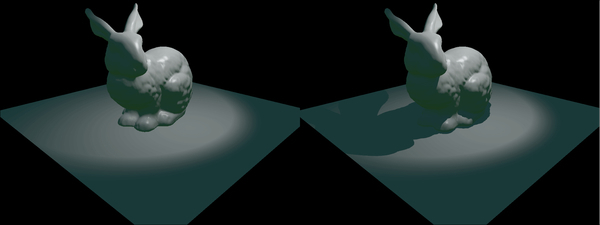Out of all the different light sources we covered, adding shadow-casting support to spot lights is the easiest to accomplish. We will be using a technique based on the way projected textures are handled (covered in Chapter 1, Forward Lighting). This shadow-casting technique is called percentage-closer filtering (PCF).
The following screenshot features a side-by-side view of the same spot light with no shadows on the left-hand side and with shadows on the right-hand side:

One side benefit of shadows is that they help clarify the relative height between different scene elements. In the left image of the screenshot, it's hard to tell if the bunny is floating in the air or standing on the surface. The shadows on the right image help us determine that the bunny is standing on the surface.



